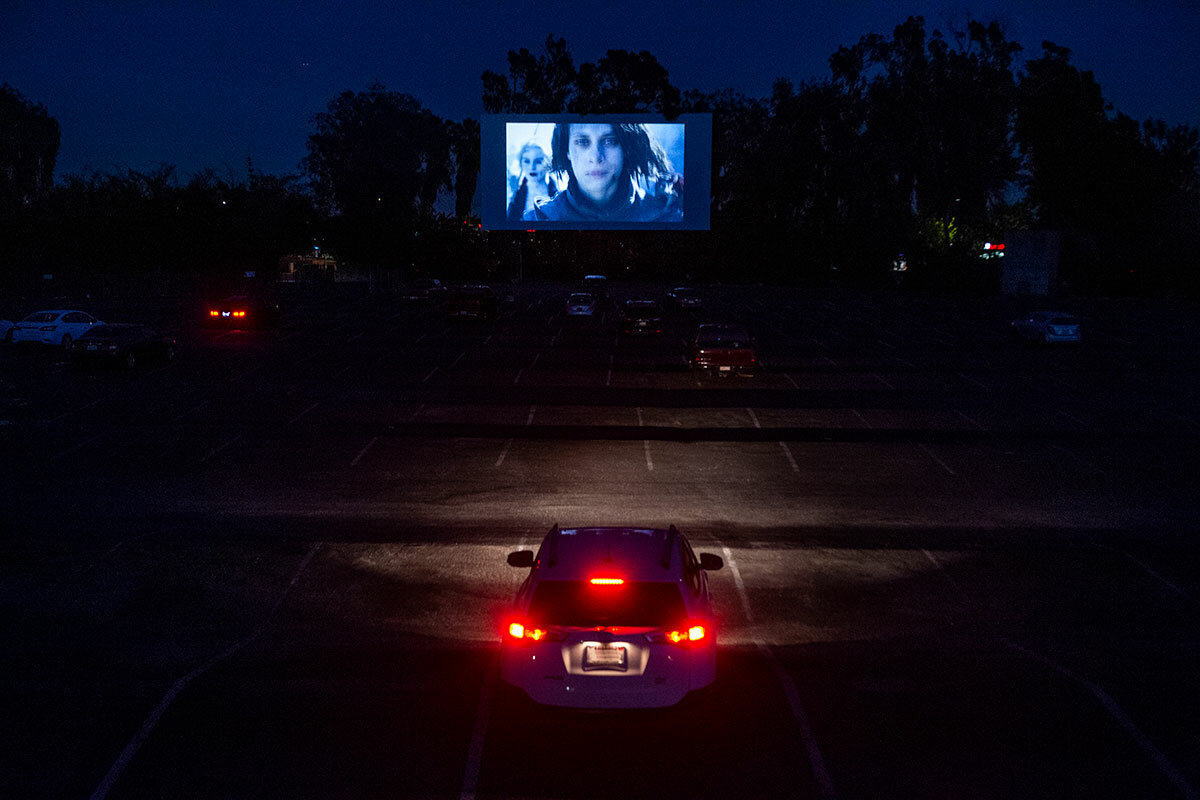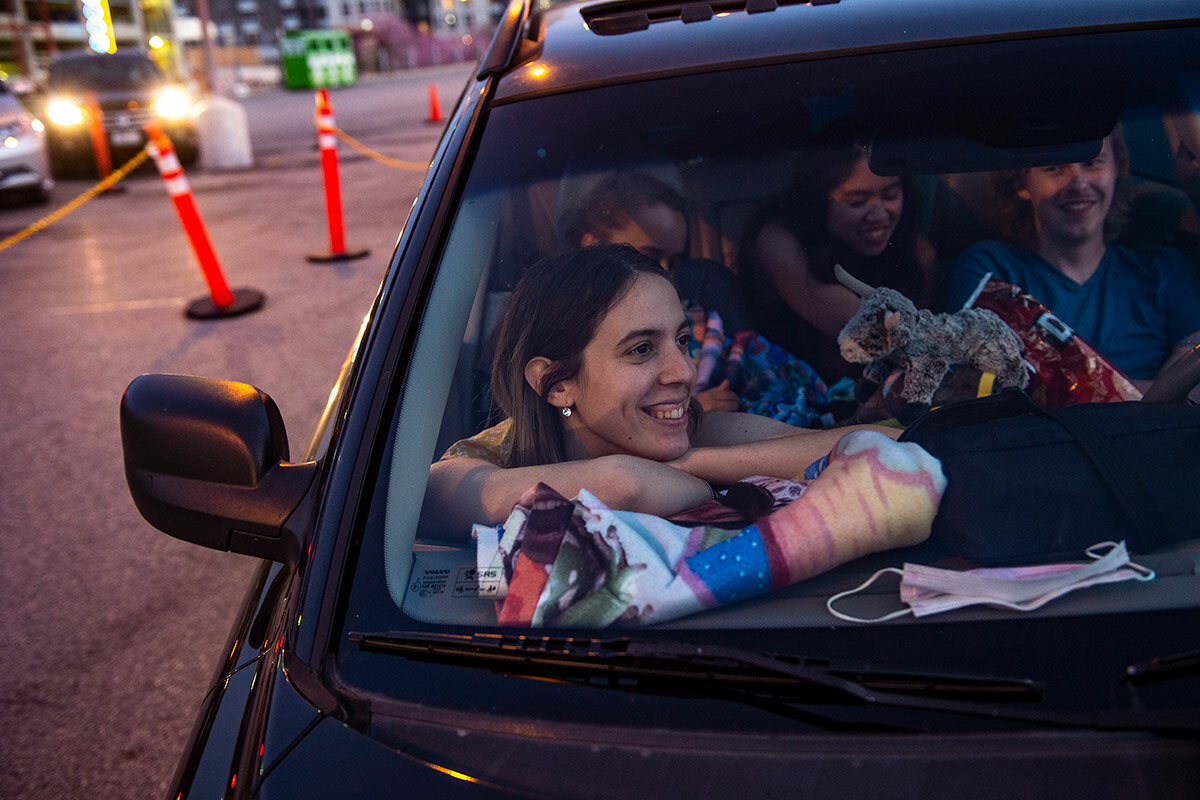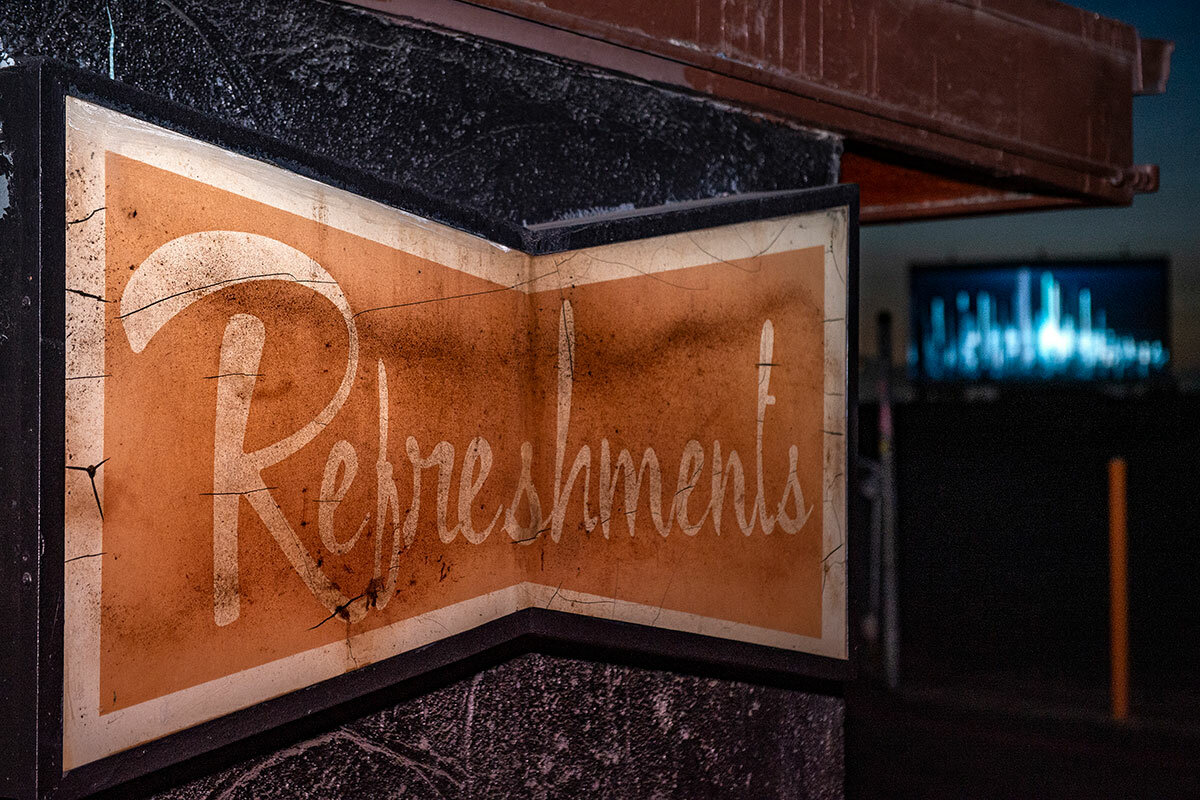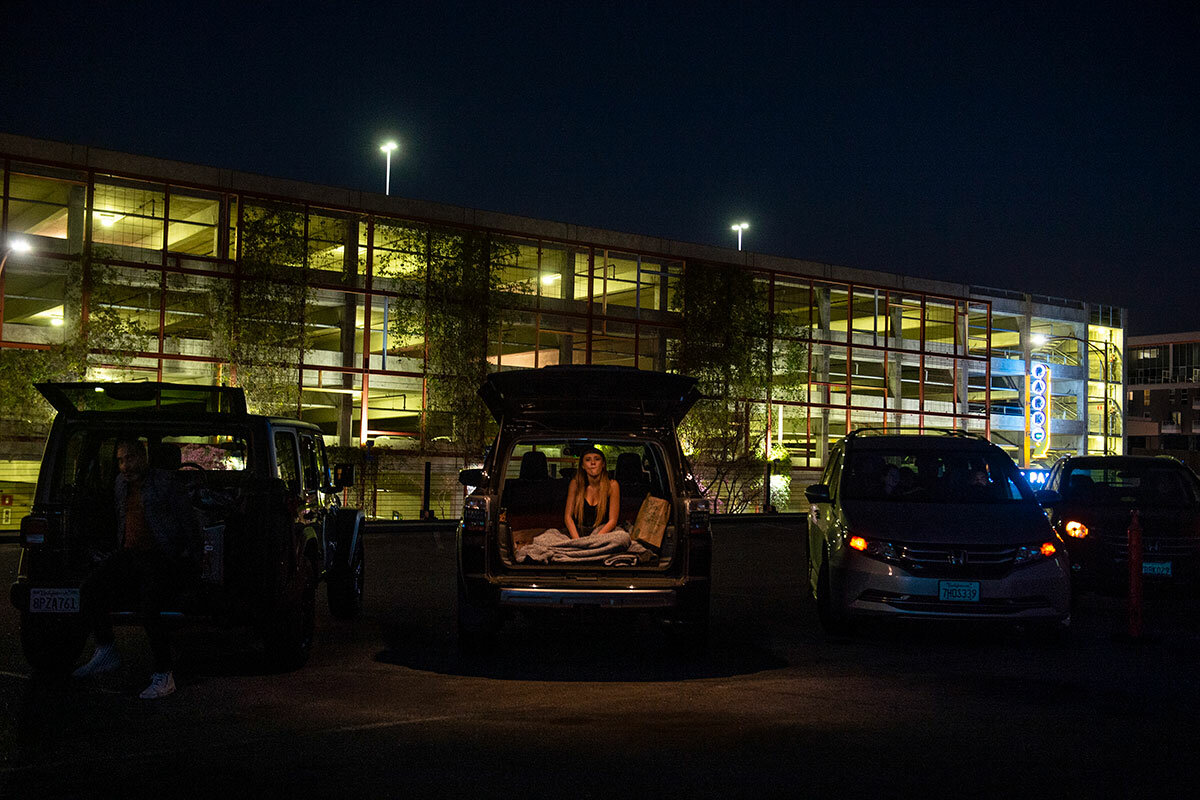In Pictures: Drive-ins, dusk, and dashboards
Loading...
| Los Angeles
The Glendale parking lot is filling up quickly as Xavier Sanchez carefully directs another car into just the right spot.
It’s not the weekend, or even a new blockbuster release, but the cars keep lining up to see the pop-up double feature at the Electric Dusk Drive-In. Even as indoor theaters slowly begin to reopen, Los Angeles moviegoers still seem to be flocking to the reemerging drive-in movie scene. Is it just nostalgia or a trend that’s here to stay?
With its year-round temperate weather and deeply embedded car culture, a city like Los Angeles seems to be the perfect place for drive-in theaters. Before the pandemic, a slow and steady decline had settled in, leaving only a handful of viable theaters scattered around the area. Mission Tiki Drive-In Theatre in Montclair, which opened in 1956, had seen a decline in ticket sales and the site was sold.
Why We Wrote This
As moviegoers flocked to drive-in theaters in search of a pandemic distraction, they found something more – nostalgia and a reminder of just how good it feels to do something together, even when you’re in separate cars.
The pandemic ended up being a bittersweet reprieve for Mission Tiki. As the developer delayed breaking ground, the drive-in saw an increase in ticket sales as moviegoers rediscovered the retro entertainment. The temporary reopening also gave local fans more time to say goodbye.
With so few established drive-in theaters left, pop-ups have swept in. Using inflatable screens and rented parking lots, new companies are offering blockbuster releases and old films to audiences.
“We were locked in quarantine in 2020. I sat there and scratched my head. It’s like, what a great opportunity to make lemonade out of lemons,” says P. Ben Chou, founder of WE Drive-Ins, who used his new company to address the need for pandemic-safe entertainment in his community.
Mr. Chou decided that he could help not only cooped-up movie fans (by “restoring the hearts”) but also workers hit hardest by the pandemic (in the restaurant and theater sectors). Before going on hiatus recently, his pop-ups included food and films, so that he was “putting both sectors, to a small degree, back to work,” Mr. Chou says.
Despite the struggles of the older, established drive-ins, pop-up models that repurpose underused spaces seem to be thriving for now, even as indoor entertainment becomes more widely available.












